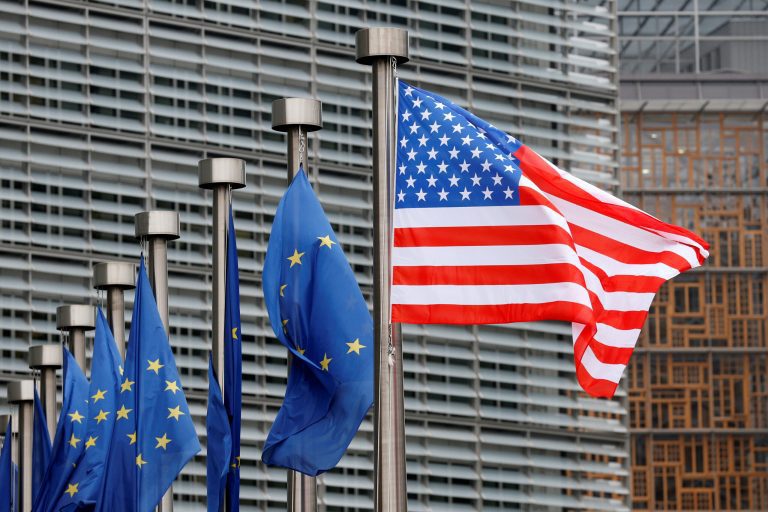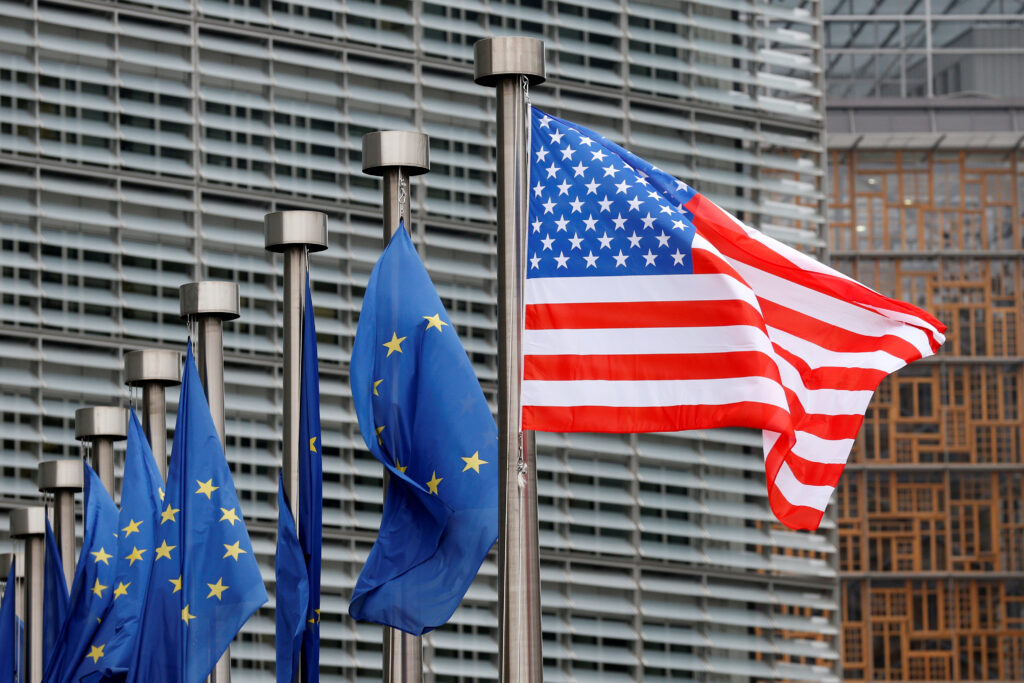With President-elect Donald Trump set to take office, are tough times ahead for U.S.-European Union (EU) relations? There are some signs that indicate this. Trump’s campaign promises of up to 20 percent tariffs on all imports to the United States have sparked concern and action within the EU, where wounds are still raw from the crisis. 2018 trade skirmish on steel and aluminum imports. EU leaders have already said they want to work with Trump, but they have also would have have drawn up lines of potential retaliation in the event of new tariffs. As for Russia, the European establishment spent the fall worrying about then-candidate Trump’s declaration that he would end the war in Ukraine by “twenty-four hours.” Trump has expressed skepticism about U.S. support for Ukraine and Europeans are wondering what a negotiated settlement could mean for Russia’s future war aims.
From a European perspective, these are legitimate causes for concern. But the US and EU need each other more than ever, especially in the area of technology cooperation, where neither side can achieve their respective geopolitical goals without a strong partnership. Recognition of this mutual need was the catalyst for the Biden administration’s desire, early in its term, to create the Trade and Technology Council (TTC), a formal policy-level dialogue on technology issues with the leaders of the United States and the EU.
Whether Trump ultimately decides to maintain the TTC, attempt to revamp it, or scrap the framework altogether, the format of technology cooperation is less important than the cooperation itself. Continued collaboration between the two economies is paramount due to the combination of competition from non-market economies and lack of capacity in three key geostrategic areas: telecommunications, semiconductor manufacturing, and critical minerals and raw materials. . These areas provide the building blocks for many products and services that the United States and EU countries use across a variety of sectors, including critical infrastructure operations, medical device manufacturing, and many military applications. Thus, leadership in these sectors will define geopolitical outcomes for the next generation.
In telecommunications, U.S. policymakers on both sides understand the need to keep the global Internet and Western networks free from Chinese surveillance and influence. After the United States placed prohibitions Regarding Chinese telecommunications providers Huawei and ZTE, industry players and policymakers quickly recognized that the alternatives were mostly European. This led to the decision of the first Trump administration Clean Grid Initiativewhich would never have seen the light of day without European cooperation and companies. Nothing over the past four years has significantly changed this dynamic, which would suggest that further transatlantic cooperation will be necessary.
When it comes to semiconductor manufacturing, neither the US nor the EU alone has the capacity to replicate Taiwan’s semiconductor production in the near future. Taiwanese companies produce more than 60 percent of the semiconductors of the world and more than 90 percent of the most advanced. As both economies tie public funds to local chip manufacturing, continued collaboration will be necessary to reduce foreign dependence on chip manufacturing and avoid unnecessary market distortion due to zero-sum competition over subsidies for chip manufacturing. The US Department of Commerce has announcement more than thirty billion dollars in private sector investments proposed by the CHIPS Act, which are estimated to create more than 115,000 new jobs. The EU European law on crisps » will see more than “43 billion euros of political investments until 2030”. New subsidies could indeed accelerate offshoring trends, but a complete lack of cooperation regarding the types of semiconductors manufactured and their intended end use would be mutually destructive and would not be in the interests of either the United States or the EU.
The US and EU have also long relied on China for critical minerals and raw materials. Expert estimate that as much as 98 percent of critical minerals used by the EU come directly from China, and this figure rises to almost 60 percent for the United States. This excessive dependence is due to range of local factorssuch as mining and refining capacity, legal barriers to mining, and low rates of return. Both governments have recently begun to reduce risks by looking toward Africa. As part of the Group of Seven (G7) Partnership for Global Infrastructure and Investment, it has reached a 2023 agreement with the governments of Angola, Zambia and the Democratic Republic of Congo on the continued development of the Lobito Corridor, investing in local infrastructure in exchange for access to key resources. If this investment comes to fruition, it could go a long way to addressing the current US and EU dependence on China for critical minerals and raw materials, while demonstrating an attractive alternative financing model to the Chinese Belt and Road Initiative.
In the coming months, the United States and the EU will need to align on mutual interests by strengthening technological cooperation and working together to compete with non-market economies. However, for this to happen, the EU will need to provide flexibility and space to the Trump administration when setting its initial priorities. The EU will need to acknowledge transatlantic divergences in areas such as sustainability and green technology, while negotiating hard on trade to demonstrate that mutual assured destruction benefits neither side. A cooperative tone combined with savvy negotiations could well rule out the possibility of imposing blanket tariffs on the US against the EU. Such an outcome is in the strategic interest of the United States and the EU, so that they can focus their attention where it is most needed.
Trevor Rudolph is vice president of global digital policy and regulation at Schneider Electric, where he leads the company’s technology policy and regulatory affairs strategy across North America, Europe and Asia. His opinions are his own and do not necessarily reflect the positions of his employer.
Further reading
Image: The flags of the United States and the European Union are pictured during Vice President Mike Pence’s visit to the European Commission headquarters in Brussels, Belgium February 20, 2017. REUTERS/Francois Lenoir.



